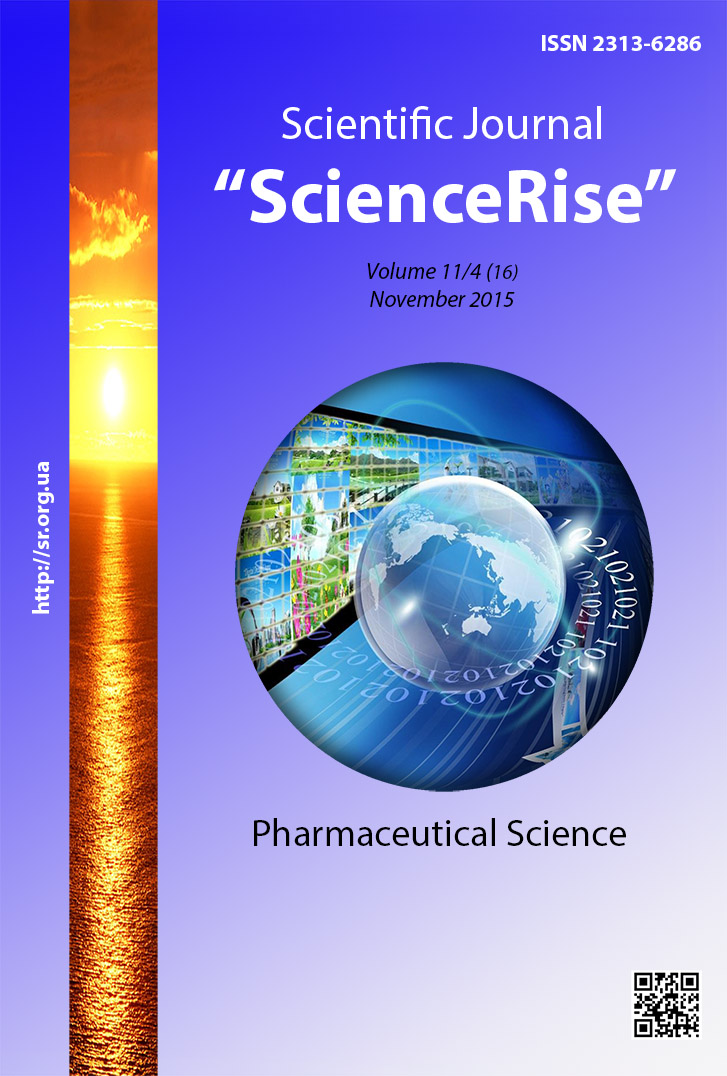The perspective of polymers use as excipients in solid dosage forms production
DOI:
https://doi.org/10.15587/2313-8416.2015.54891Keywords:
technology, solid dosage forms, tablets, excipients, polymers, physical and chemical properties, useAbstract
Rational and scientifically grounded excipients selection is quite essential to increase the remedies competitiveness on the market. Excipients significantly affect the active pharmaceutical ingredients bioavailability and promote pharmacological activity. In development and upgrading of the solid dosage forms technology high molecular weight organic compounds, allowing creating drugs with predicted biopharmaceutical and technological parameters play a leading role recently. A wide range of new polymers allows creating the optimum conditions for implementation of activity of remedies with different chemical structures and action directions. The use of new, universal high molecular weight organic compounds create prerequisites for technological process optimization.
Aim. To determine modern polymers used in pharmacy, their physical and chemical properties, and the area of use.
Conclusion. Therefore, excipients diversification due to new generation of high molecular weight organic compounds create new possibilities for tableting process improvement and obtaining high quality remedies
References
Duncan, R., Spreafico, F. (1994). Polymer Conjugates. Clinical Pharmacokinetics, 27 (4), 290–306. doi: 10.2165/00003088-199427040-00004
Alekseev, K. V., Kedik, S. A., Blynskayaetal, E. V. (2011). PharmaceuticalTechnology. Soliddosageforms. Moscow: PublishingHouse ZAO IPT., 662.
Conti, B., Pavanetto, F., Genta, I. (1991). Use of polylactic acid for the preparation of microparticulate drug delivery systems. Journal of Microencapsulation, 9 (2), 153–166. doi: 10.3109/02652049109021231
Ali, S. A. M., Doherty, P. J., Williams, D. F. (1994). Molecular biointeractions of biomedical polymers with extracellular exudate and inflammatory cells and their effects on the biocompatibility, in vivo. Biomaterials, 15 (10), 779–785. doi: 10.1016/0142-9612(94)90032-9
Chu, C. C. (1981). Thein-vitro degradation of poly(glycolic acid) sutures ? effect of pH. Journal of Biomedical Materials Research, 15 (6), 795–804. doi: 10.1002/jbm.820150604
Li, S. (1999). Hydrolytic degradation characteristic sofaliphatic polyesters derived from lactic and glycolic acids. Journal of Biomedical Materials Research, 48 (3), 342–353. doi: 10.1002/(sici)1097-4636(1999)48:3<342::aid-jbm20>3.0.co;2-7
Bastoli, C. (Ed.) (2005). Hand book of Biodegradable Polymers. Shawbury: Rapra Technology Limited, 549.
Siepmann, J. (2001). Mathematical modeling of bioerodible, polymeric drug delivery systems. Advanced Drug Delivery Reviews, 48 (2-3), 229–247. doi: 10.1016/s0169-409x(01)00116-8
Gilding, D. K., Reed, A. M. (1979). Biodegradable polymers for use in surgery—polyglycolic/poly(actic acid) homo- and copolymers: 1. Polymer, 20 (12), 1459–1464. doi: 10.1016/0032-3861(79)90009-0
Gunatillake, P. A., Adhikari, R. (2003). Biodegradable synthetic polymers for tissue engineering. European Cellsand Materials, 20 (5), 1–16.
Schmitt, E. A., Flanagan, D. R., Linhardt, R. J. (1993). Degradation and release properties of pellets fabricated from three commercial poly(D,L-lactide-co-glycolide) biodegradable polymers. Journal of Pharmaceutical Sciences, 82 (3), 326–329. doi: 10.1002/jps.2600820322
Gad, S. C. (Ed.) (2008). Pharmaceutical Manufacturing Handbook: Productionand Processes. New Jersey: J. Wiley & Sons, 1370.
Garlotta, D. (2001). A literature review of poly (lactic acid). Journal of Polymers and the Environment, 9 (2), 63–84. doi: 10.1023/a:1020200822435
Alekseev, K. V., Gritskova, I. A., Kedik, S. A. (2011). Polymers for Pharmaceutical Technology. Moscow: Publishing House ZAO IPT., 511.
Downloads
Published
Issue
Section
License
Copyright (c) 2015 Інна В’ячеславівна Ковалевська, Олена Анатоліївна Рубан

This work is licensed under a Creative Commons Attribution 4.0 International License.
Our journal abides by the Creative Commons CC BY copyright rights and permissions for open access journals.
Authors, who are published in this journal, agree to the following conditions:
1. The authors reserve the right to authorship of the work and pass the first publication right of this work to the journal under the terms of a Creative Commons CC BY, which allows others to freely distribute the published research with the obligatory reference to the authors of the original work and the first publication of the work in this journal.
2. The authors have the right to conclude separate supplement agreements that relate to non-exclusive work distribution in the form in which it has been published by the journal (for example, to upload the work to the online storage of the journal or publish it as part of a monograph), provided that the reference to the first publication of the work in this journal is included.

